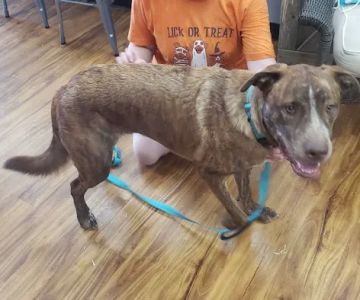How to Teach Your Dog to Relax in Their Crate
When I first got my dog, like many new pet owners, I was eager to make sure he felt comfortable and safe in his new environment. One of the first challenges I faced was crate training. The idea of placing my dog in a crate seemed like it might cause stress or anxiety for him, but after some research and a little patience, I learned how to create a positive and relaxing experience for him. Crate training can be a wonderful tool for keeping your dog safe and giving them a place to retreat. The key, however, is to teach them how to relax and enjoy their crate rather than see it as a place of punishment. Here’s how I did it and how you can too.
1. Start With Positive Associations
When introducing your dog to their crate, the most important thing is to associate the crate with positive experiences. If your dog sees their crate as a fun place, they’ll be more inclined to relax in it. I began by placing treats or toys inside the crate to encourage my dog to explore it on his own. Whenever he went inside, I praised him and gave him a treat. This helped him create a positive connection with the crate right from the beginning. Make sure that the crate is a comfortable and inviting space, with soft bedding and enough room for your dog to lie down comfortably.
Additionally, try using interactive toys that can keep your dog engaged while they’re in the crate. I found that filling a toy with peanut butter or dog-friendly treats helped distract my dog and kept him calm. Slowly, my dog started to view his crate as a place of fun, rather than something to fear.
2. Gradual Crate Training Sessions
It’s crucial to take baby steps when crate training. Start by getting your dog used to being in the crate for short periods. I would begin by closing the door for a few seconds, then gradually increasing the duration as he got more comfortable. At first, I sat beside the crate to provide reassurance. Slowly, I increased the time he spent inside while I remained in the same room. This helped him feel secure and understand that the crate wasn’t a punishment.
Remember to never leave your dog in the crate for too long, especially when they are just starting the training process. Short sessions help avoid anxiety and reinforce the idea that being in the crate is safe and comfortable. With consistent practice, my dog became more relaxed with each session, and it eventually became a normal part of our routine.
3. Use Calming Techniques and Products
When my dog first started using the crate, I noticed that he would sometimes get anxious, particularly at night. That’s when I decided to try calming products like pheromone sprays and diffusers. These products are designed to mimic the comforting scents that dogs naturally respond to, helping them feel more at ease. I applied the calming spray to his bedding, and it seemed to make a noticeable difference in his ability to relax.
You can also try using soft music or white noise, which can be soothing for dogs. I played calming instrumental music near the crate, and it helped drown out external noises that might have made my dog anxious. Over time, my dog learned to associate the crate with relaxation and sleep, thanks to these calming aids.
4. Create a Routine
Dogs are creatures of habit, and they thrive on routine. One of the best ways to teach your dog to relax in their crate is to establish a consistent routine. I made sure to put my dog in his crate at the same times each day—during meals, when I needed to leave the house, and at bedtime. This consistency helped my dog understand when it was time to relax and settle down.
Additionally, after a long walk or play session, I would put my dog in his crate when he was naturally tired. This worked well because he was already calm and relaxed from exercise. By linking crate time with a natural rest period, he began to associate the crate with relaxation rather than confinement.
5. Never Use the Crate as Punishment
One of the most important aspects of crate training is ensuring that the crate is always a positive space. Never use the crate as a punishment for bad behavior. I made sure to avoid this mistake because it can create negative associations with the crate, making your dog anxious and upset every time they go inside. When a dog associates their crate with negative feelings, it becomes much harder to teach them to relax in it.
If your dog starts to act out or cry when placed in the crate, avoid reacting with anger or frustration. Instead, remain calm and patient, and reassure your dog. I found that when I ignored my dog’s whining and only rewarded him with affection when he was calm, he learned to relax in the crate much quicker.
6. Patience and Consistency Are Key
Crate training takes time, and each dog will progress at their own pace. While some dogs adjust quickly, others may need more time to feel comfortable. I had to remind myself to stay patient during the process, as it can take several weeks for some dogs to fully adapt. The key is consistency. The more consistently I practiced, the quicker my dog became accustomed to his crate.
With time, my dog started to willingly go into his crate, and he would settle down for naps or overnight sleep without any issues. It was incredibly rewarding to see how calm and comfortable he became in his crate, and I felt reassured knowing he had a safe space of his own.
Conclusion: A Relaxing Crate Experience for Your Dog
Teaching your dog to relax in their crate is all about creating positive associations, being patient, and providing consistent training. By gradually increasing their crate time, using calming products, and establishing a routine, you can help your dog feel comfortable and relaxed in their crate. Whether it's for rest, travel, or training, a well-trained dog who enjoys their crate can make your life—and their life—much more enjoyable. If you’re struggling with crate training, don’t hesitate to reach out to a professional dog trainer for personalized advice and support. With patience and persistence, you can ensure your dog’s crate is a cozy, relaxing space they can enjoy for years to come.











